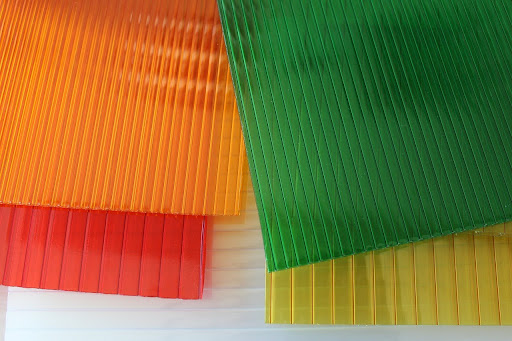With innovation taking a toll in today’s world, polycarbonate sheets have posed as an upstart material that has perfectly met the countless necessities across industries due to their innovative and efficient properties. Polycarbonate sheet is widely used in manufacturing. They offer some remarkable features, and their applications stretch over a broad spectrum, from making construction tools to using them as automotive parts or electronics. Here, we will look at how a polycarbonate sheet is changing the landscape of modern applications.
Understanding Polycarbonate Sheet
Polycarbonate is a high-performance thermoplastic polymer material with very large moulding processability, impact resistance, and excellent transparency. This material gets its claims for fame for impact resistance, optical clarity, and toughness. Sheets of varying types—solid, multi-wall and corrugated sheets—are available to address different needs. Polycarbonate is a tremendous thermal insulation material with UV protection, making it ideal.
Critical Properties of Polycarbonate Sheets
- Impact Resistance: They can take massive impact levels. Because of this, they are a great option for applications requiring strength and longevity, such as protective barriers and safety glazing.
- Optical Clarity: Polycarbonate sheets have a high light transmission rate, allowing for better optical clarity. They are commonly used in applications where a distorted appearance is undesirable, like skylights or signs.
- Thermal Insulation: They offer good thermal insulation, making it easy to sustain indoor temperatures comfortably and leading to higher energy savings. This is especially useful in construction and building projects.
- UV Resistance: They are often coated with a UV layer to protect against harmful ultraviolet rays. This feature prevents the sheets from yellowing and deteriorating with age, increasing their durability.
- Lightweight: Polycarbonate sheets are much lighter than glass and other materials, thus making them more accessible for handling and installation. This low weight even supports this very aspect by reducing structural load.
Applications in Construction and Architecture
Polycarbonate sheets are used extensively in construction and architecture because they hold great artistic worth. These are some of the most general uses:
- Skylights and Roof Lights: They have a much higher light transmission than many kinds of glass, allowing natural sunlight to flood the internal spaces of roof lights (skylights).
- Greenhouses: Polycarbonate’s insulating properties make it well suited for greenhouse applications, where it helps maintain an optimal growing environment while allowing light through.
- Facades and Wall Cladding: This material is ideal for contemporary, beautiful design applications. It is used for building facades and making wall cladding. Its impact resistance and UV protection make it a durable, lasting installations.
- Partitions and Barriers: They are used as partitions or safety barriers in commercial settings, particularly industrial ones. Their durability and transparency allow for clear screen separation, providing the right balance of protective clarity without distorting your point-of-sale view.
Used in Automotive and Transportation
Polycarbonate sheets are used in the automotive industry due to their performance attributes. They are used in a myriad of ways, including the following three:
- Headlamp Lenses: It produces headlight screens due to their high impact strength and optical clarity, allowing better and more secure driving at night.
- Interior Panels: These are used for various panels and components inside the vehicle. Due to their lightweight material, the car weight is reduced, thus making it more fuel efficient.
- Protective Screens: These are used to make protective screens and barriers for vehicles that provide increased safety for drivers and passengers and prevent them from harm.
Applications in Electronics and Consumer Goods
The versatility of polycarbonate sheets extends to electronics and consumer goods, where their properties are leveraged to enhance functionality and design. Notable applications include:
- Electronic Enclosures: Polycarbonate’s impact resistance and thermal stability are ideal for electronic enclosures, protecting sensitive components from damage and environmental factors.
- Displays and Screens: Their optical clarity makes them suitable for display and screens, ensuring high-quality visual output in devices such as smartphones and monitors.
- Household Items: Polycarbonate manufactures various household items, including storage containers, kitchenware, and furniture. Its durability and ease of moulding make it a popular choice for these applications.
Environmental Considerations
Although a polycarbonate sheet provides multiple uses, sustainability is another important aspect. Polycarbonate is made of petrochemicals, and it, in turn, requires a lot of energy to be produced. However, most manufacturers are now adopting this new phase for delivering their products—by recycling as much as possible and minimising the use of carbon footprints. Moreover, the long life of these means less wastage and fewer changes.
Conclusion
One material that is a perfect match for any modern application is a polycarbonate sheet. Their unique qualities—impact resistance, optical clarity, thermal insulation, and UV protection—enable them in multiple construction applications and use cases ranging from automotive to electronics and consumer goods. The demand for new creative solutions by industries ensures these are essential in contemporary material technology and design.






